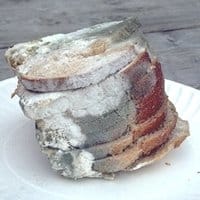Neurospora crassa – red bread mould – could help make better supercapacitors and lithium-ion batteries say researchers at Scotland’s University of Dundee.
While much research has focused on the improving the performance of electrodes by using materials such as carbon nanotubes and manganese oxides, little work has been carried out on the construction of novel electrode materials using fungal biomineralization products.
University of Dundee researchers have combined red bread mould with urea and manganese chloride, which resulted in a `biomineralised’product and fungal filaments enveloped by minerals in various formations.
After intense heat treatment (300°C) for 4 hours, this produced carbonised biomass and manganese oxides.
Testing on the carbonised fungal biomass-mineral composite in a lithium-ion battery revealed it retained 90% of its capacity after 200 cycles of charging. Used in a supercapacitor, a high specific capacitance (>350 F g−1) was achieved.
“We were surprised that the prepared biomass-Mn oxide composite performed so well,” said Professor Geoffrey Gadd, who heads the Geomicrobiology Group at the University of Dundee.
A paper on the discovery, “Fungal Biomineralization of Manganese as a Novel Source of Electrochemical Materials,” was published in the Cell journal Current Biology and can be viewed in full here.
“This is the first report of the application of fungal-derived MnOx as an electrode material in supercapacitors and lithium-ion batteries, with MycMnOx/C showing good electrochemical properties, especially in cycling stability in lithium-ion batteries,” say the authors.
“Fungal biomineralization methods for the synthesis of mycogenic MnOx/C could therefore be a useful alternative strategy for the preparation of novel electrochemical materials.”
The team will continue its work in exploring the use of fungi in producing various potentially useful metal carbonates.
The inspiration for the research originated in earlier work using fungi to transform metals and minerals. Previously, the team have demonstrated that fungi could be used to stabilise toxic lead and uranium.
In somewhat related research, a team at the University of California, Riverside demonstrated the use of portobello mushrooms to create a more durable lithium-ion battery anode. The researchers believe mushroom carbon anode technology could eventually replace graphite anodes














































